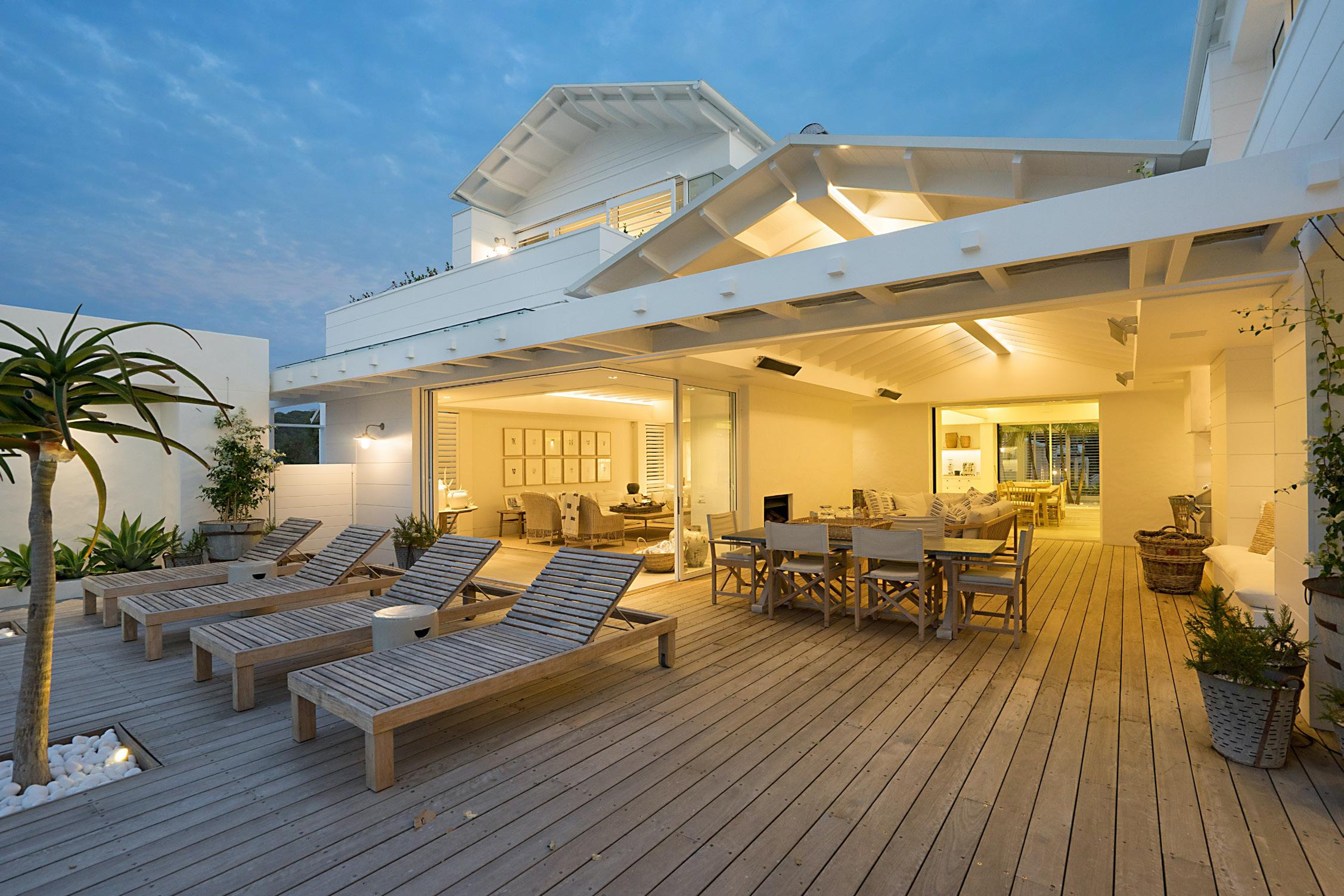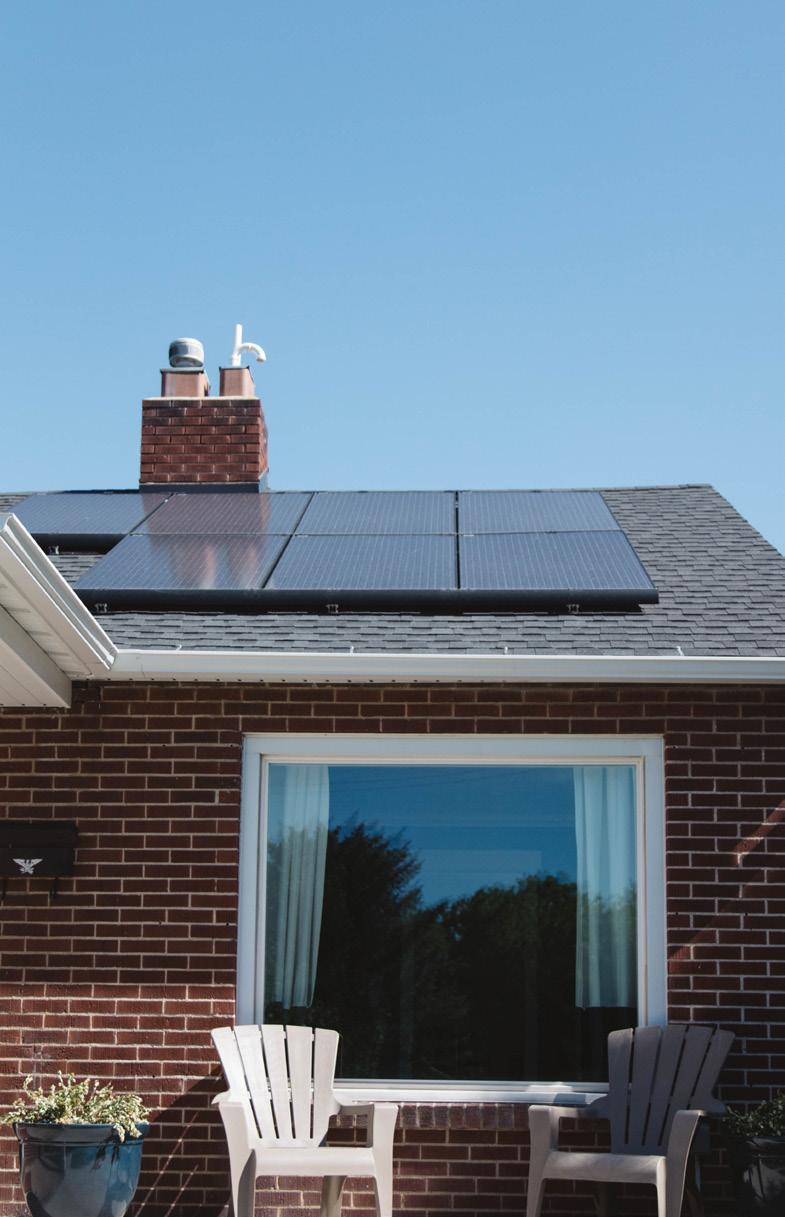
10 minute read
GOING OFF THE GRID
By Bonny Fourie bronwyn.fourie@inl.co.za
More South Africans are considering going off the grid, with unreliable electricity and water supplies. However, the costs are usually the deterring factor.
Advertisement
FOR INSTANCE, if you are thinking of a partial off-grid system, it could set you back at least R100 000.
To start, experts say, the key to knowing what you need and your reasons for wanting to be independent of Eskom will help guide you to the type of home system you need.
Stage 1 First things first
The first thing to do, says Christiaan Hattingh, the managing director of AWPower, is define what the term “offgrid” means to you.
Does it mean reducing your monthly electricity bill to a minimum or does it mean not having a grid connection at all?
“If it means reducing your monthly electricity bill to a minimum, understand your home set-up.”
This means knowing what you consume and when.
“Heating and cooling – geysers, underfloor heating, and air conditioning –typically are the highest energy consumers, along with loads that run for extended periods, such as pool pumps and security lights.”
Other factors to ponder include whether you have LED lights installed, if you are using warm water from the geyser to wash your dishes instead of boiling the kettle for warm water and if your pump is on a timer.
Once you understand how much energy you consume daily (kWh units) and throughout the year, a correctly sized system – inverter, batteries, and panels –can be designed.
“If you are unsure about this, a load measurement exercise can be done by your installer to analyse your consumption over a period of time.”
Echoing this, Georgina Smit, the technical head at the Green Building Council of South Africa (GBCSA), which has played a key role in the shift to green building practices in the country, says you need to get intimate with your household energy use before going off-grid.
“You really need to understand where power is used and when is your highest demand in order to drive efficiency. First, ensure that you have optimised the energy
efficiency performance of your home. This speaks to things like energy efficiency lighting, good insulation, appropriate solar control on your eastern and western facing facades, and appliances that use minimal energy.
“Following that, installing a solar thermal water heating system to heat your water for showering and in the taps is a must, given that water heating accounts for 30% to 40% of an average homeowner’s energy bill.
“Last, installing solar PV that converts the sun’s energy into electricity will transition you to be off the grid and independent of the Eskom supply,” she says.
If you want to go completely off-grid, with no grid connection, Hattingh says you need to know the limitations of your chosen energy system based on its size and generation capability throughout the year, such as the energy production from the PV panels.
“The benefit of understanding what you use and when, is that you will pay for a system that is correctly sized to your needs,” he says, adding: “Going the solar route is a lifestyle decision, and once you have experienced the benefits and the control you have, you will not go back.”
Stage 2 Benefits of a hybrid inverter system
A hybrid inverter system, however, is a solution that most households opt for to get themselves partially off-grid. The benefit of a hybrid system, says Hattingh, is that you don’t have to oversize a system –and spend a lot of money – to reduce your monthly bill because you have the grid as a back-up, especially during bad weather.
“The system can provide savings from solar and the stored battery power during normal on-grid operation, but is also able to provide power to essential loads from the battery and solar, if available, during load shedding or power outages.
“These systems can be expanded over time, giving you more flexibility to fit your budget and needs.”
In terms of pricing, Hattingh says you are looking at a minimum of R100 000 to start with a small system consisting of an inverter, battery and panels installed by qualified installers.
Stage 3 Get a clear picture
Homeowners who want to be completely free of Eskom do have a clear picture of what they use and when they use it.
“They are energy-conscious and typically incorporate gas for cooking and even water heating at times.”
He emphasises that it is vital to understand the limitations of the system installed.
“The inverter size determines what you can use at any given moment. The battery size and capacity have to match the inverter size and the general rule of thumb is a 1:2 rule as a minimum.
“For example, for a 5kW inverter, 10kWh battery capacity is typically required. The number of panels installed needs to be able to power the loads during the day but also charge your batteries to 100%. This is especially important during winter and means that you would have excess capacity during sunny months.
“For periods of continuous bad weather, a generator could be incorporated to charge the batteries.”
In general, Hattingh says, a completely off-grid system is two to three times more expensive than partially off-grid due to the need to oversize for bad weather months.
Stage 4 Completely off-grid
To be completely off-grid means you are self-sufficient and easing the load on the national grid, but this “comes at a cost” and homeowners should be aware of the risks of not having back-up power available.
“Partially off-grid should be the route that most people should consider due to the costs. This will also satisfy most people’s needs,” Hattingh says.
In order to be completely off grid, Smit says this should, ideally, be thought about at the design stage of the building of the home to make sure the passive elements drive energy efficiency as well as allowance for the storage space.
“A homeowner must make sure their home, their appliances and behaviour are all very efficient, and then start to look at gathering energy via rooftop solar, and if the site allows, micro-hydro.”
Stage 5 Solar systems
In addition to having a more stable power supply, Hattingh says the moment people consider solar power, they become more energy-conscious, which is a plus.
“Solar systems mostly have builtin features to measure and record consumption and show it in an app or on your computer. Once the systems are installed and you see how much electricity you consume, it becomes part of your lifestyle. One example of this in a household is a dishwasher that used to run during the evening, now runs during the sun hours.”
He notes that the most important installations that people ask for are those that allow them to not only run their essentials during load shedding but also provide daily savings.
Smit adds: “From the GBCSA’s perspective, our national grid is a really important part of our energy economy as we require it to store and move energy. Our energy transition needs to include better integration between our national grid and small scale embedded generation.”
The GBCSA is seeing “a significant increase in interest” from the residential property sector with regard to greening.
“This spans several off-the-grid features such as looking at water recycling and increasing veggie gardens for food. There is also a demand for residential developments to include community facilities that can be shared and create spaces for enjoyment and that are well located near opportunities and amenities.”

Stage 6 The cost and how to ease it
Residential financing for private individuals is in the early stages, but Hattingh says it is more readily available for homeowners from various banks and financing institutions.
“From our experience, our clients mostly pay cash.”
Praven Subramoney, the chief executive of FNB home and structured lending solutions, says the cheapest form of financing the alternate energy solutions would be to use available savings instead of credit. However, with the growing needs of customers in the context of working from home, the hefty annual price increases being levied by the power utility, and exacerbated by the recent escalation in load shedding, customers may not always have immediate access to the large initial capital outlay required to finance these solutions in available savings.
Therefore, they can use their home loans as vehicles to fund the energy solutions.
“Customers must bear in mind that their property would have typically grown in market value if you are a few years into your bond payments, which allows for access to further equity.”
The options include:
✦ Making use of the available funds in your home loan flexi facility or secured facility (prepaid funds).
✦ Applying for a re-advance on your home loan, and at no extra cost.
✦ Adding a 20% future-use loan to your home loan, or accessing your future use if registered in your bond amount, at no additional cost.
✦ Applying for a further loan on your home loan/secured facility.
✦ Bonding your unencumbered property.
Subramoney says FNB has partnered with trusted, accredited suppliers to provide customers with residential solar systems at discounted rates of up to 20%.
“An Eco-Home Solutions category has been created on the eBucks Shop where we have curated a few solar hybrid packages – entry, small, medium and high. A combination of cash, eBucks and finance can be utilised to fund these solutions.
“It’s important to note that customers wishing to use their home loan or secured credit facility to finance a solution of this nature, do so smartly and weigh up the financing costs versus the savings in monthly electricity costs over the lifetime of both the loan and the solution.”
Similarly, Absa Home Loan customers also have financing options available to them for funding alternative power upgrades to their properties, says managing executive Nondumiso Ncapai.
“If the market value of your property has increased and you have equity in the property, you can apply for a Further Advance which is an additional bond against the property. This will incur bond registration costs and the funds will be paid directly to you.
“Alternatively, if you have paid down your original loan amount and have equity in your property, you can apply for a Re-advance. In this case, an additional bond registration will not be applicable, and the funds will still be paid directly to you.
As with FNB, the bank can also offer customers credit options like personal loans or credit cards.
Ncapai adds: “We understand our customers have unique needs and we encourage them to engage us when considering large home-improvement projects, including the installation of alternative energy systems, to explore the various options available to them.
“Regardless of which alternative energy solution you opt for, it’s important that you work with a credible installer who has a wireman’s licence, is experienced with the relevant installation type, and can provide the necessary after-sales service and guarantees.










